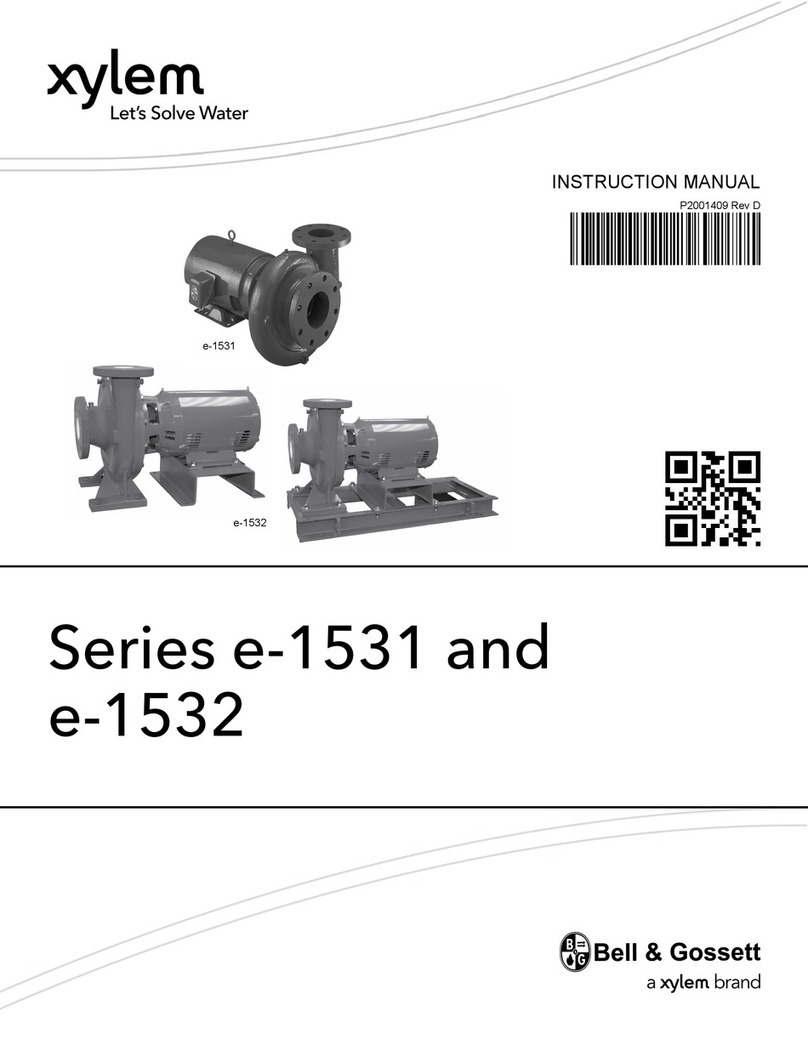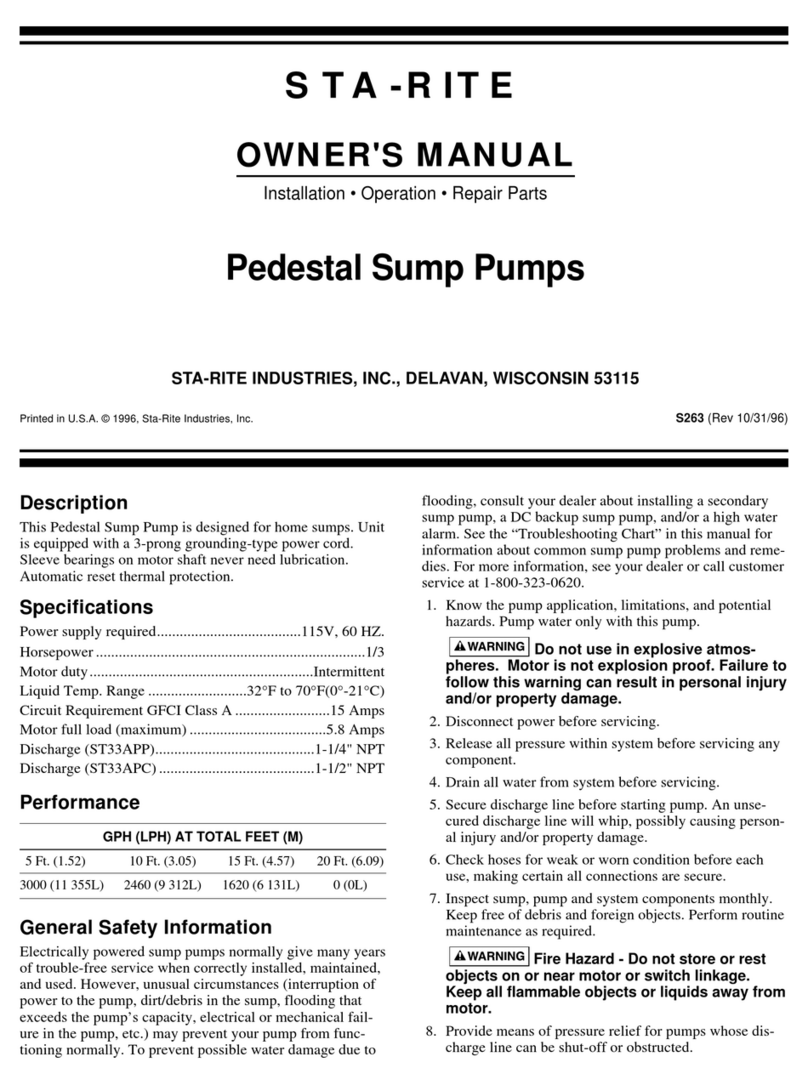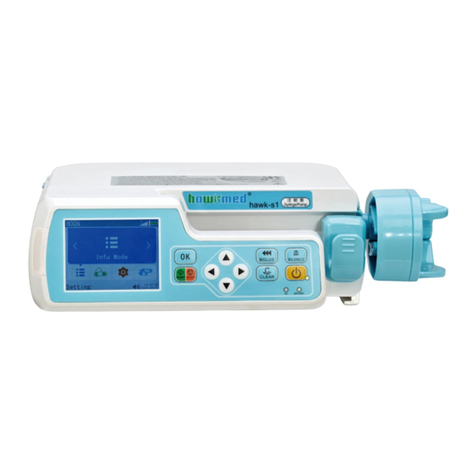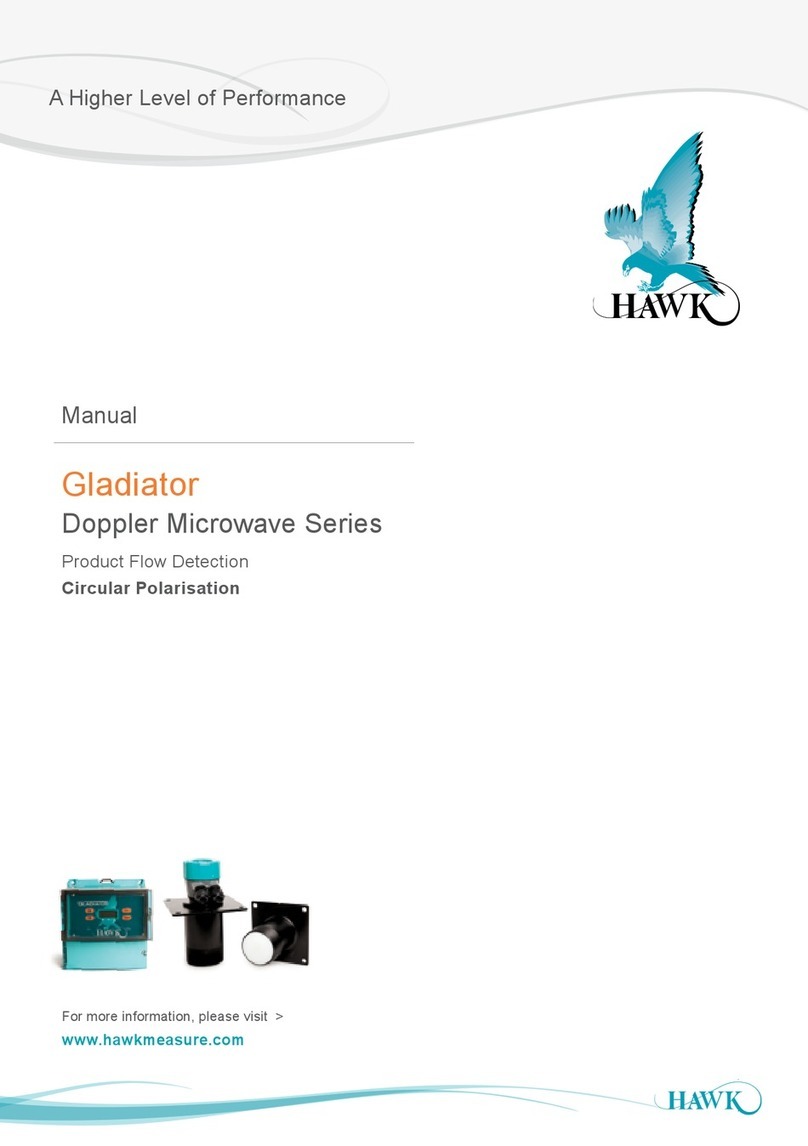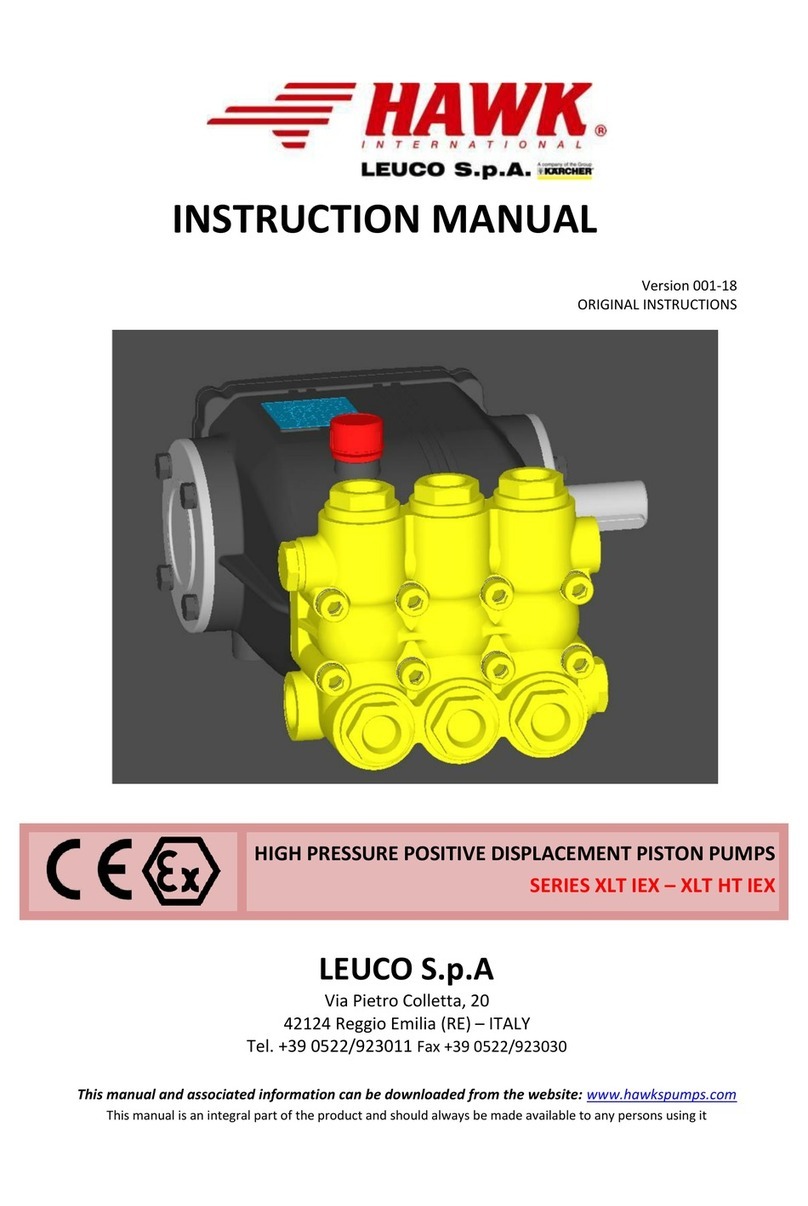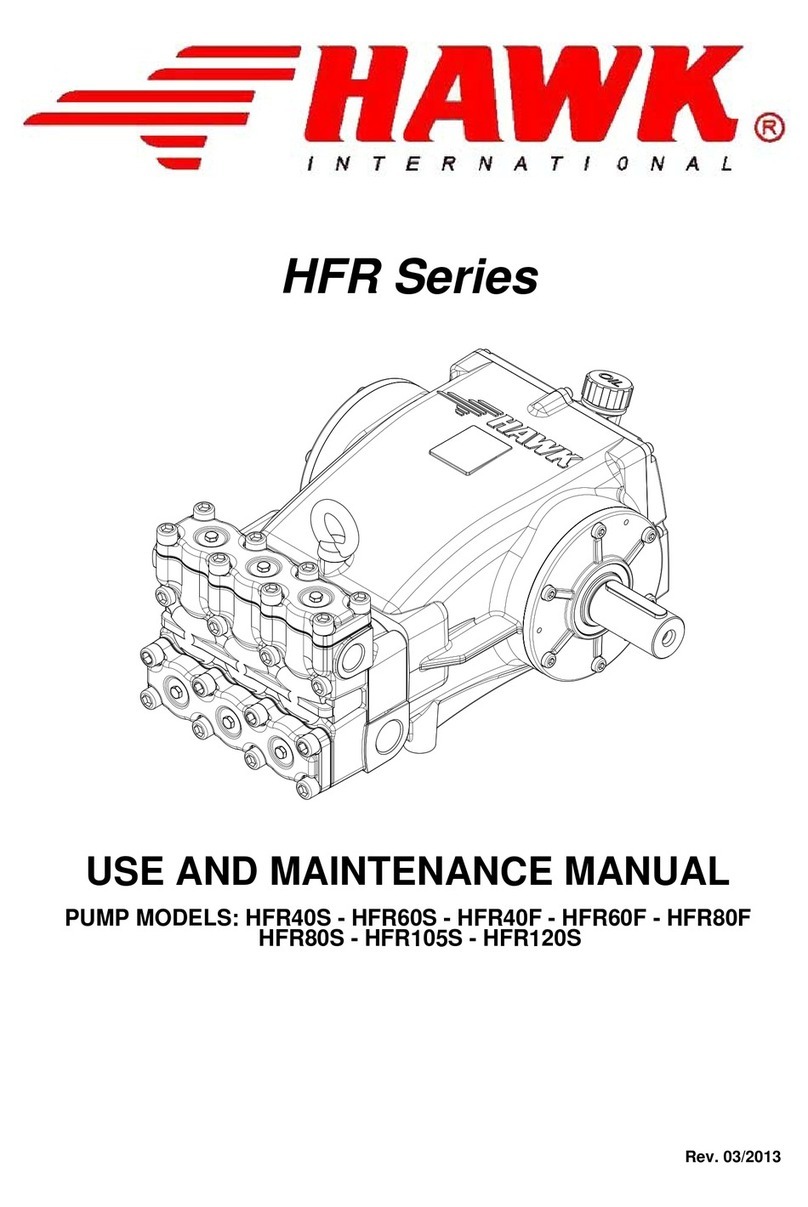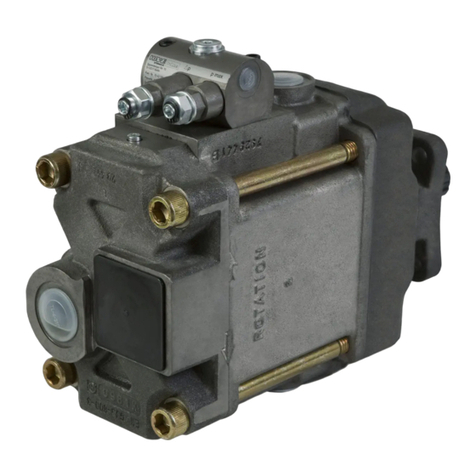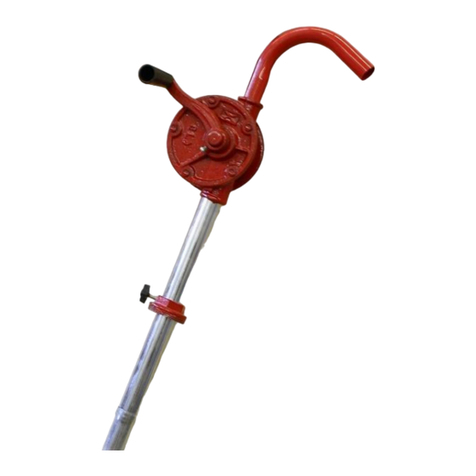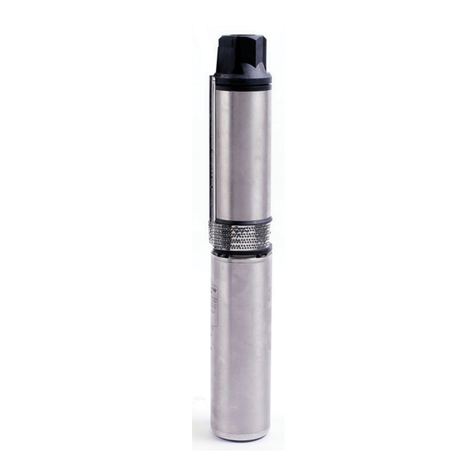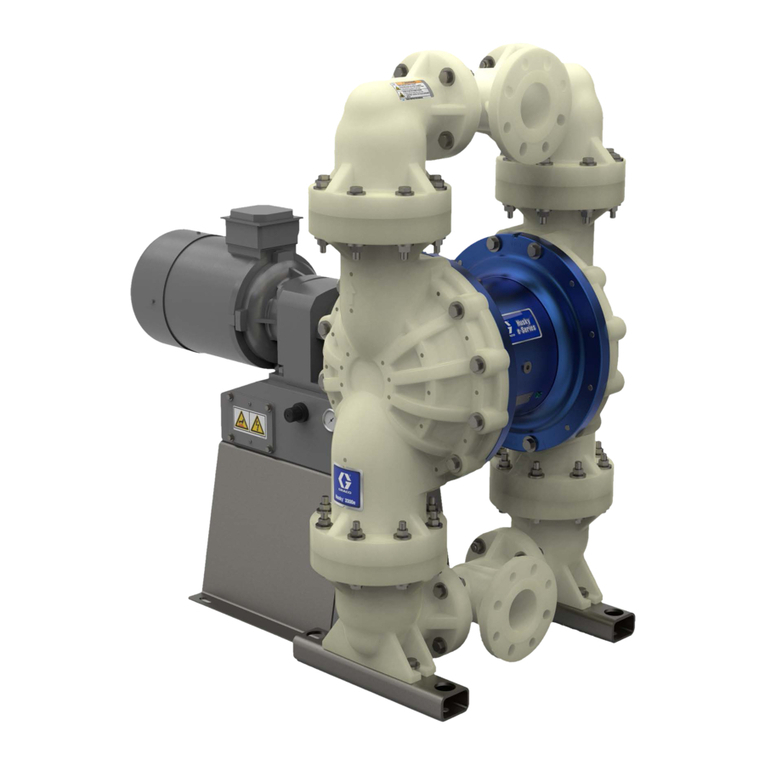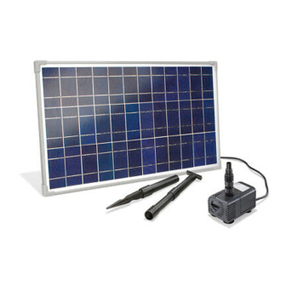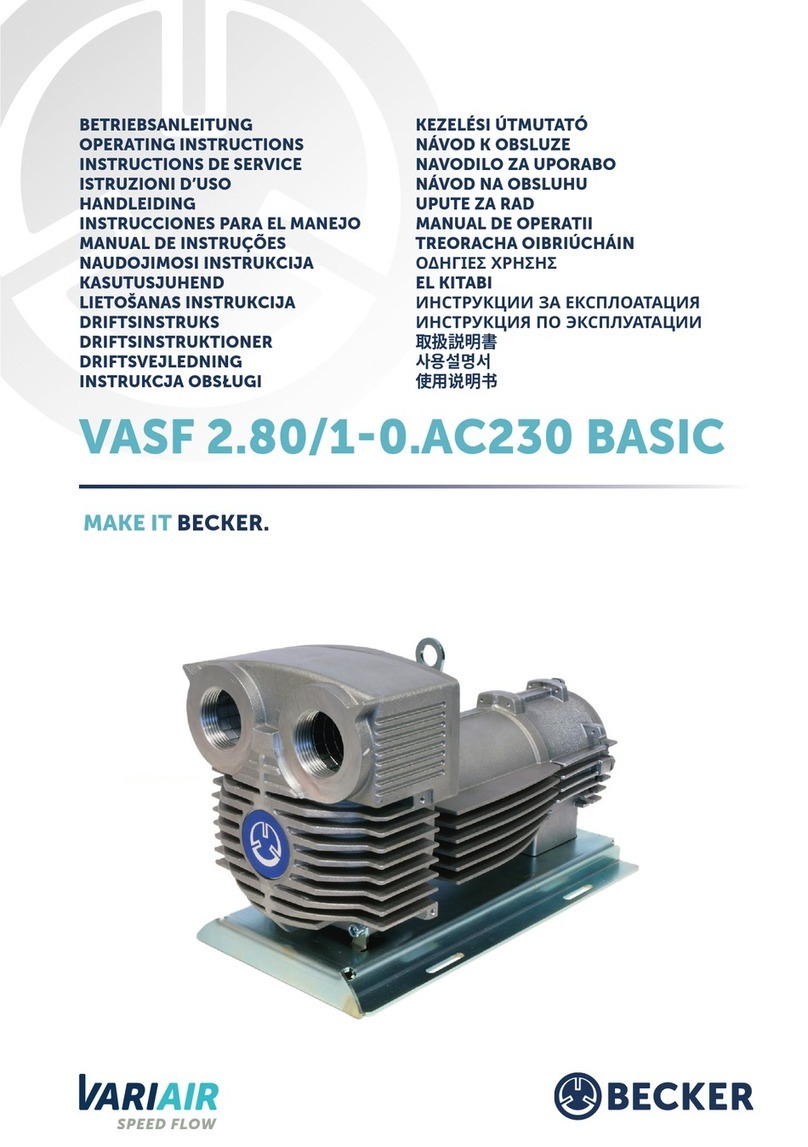
Personal casualties may be caused if precautions mentioned in this warning are violated.
A) The Infusion Pump uses peristaltic mechanism for medical fluid infusion, but cannot detect leakage
caused by disconnection or crack of infusion set. It is required to inspect the infusion status regularly
to prevent above problems.
B)During infusion process, please regularly check the status of dripping as well as the residual liquid
inside the infusion bag/bottle to ensure correct performance of the infusion. The Infusion Pump does
not directly measure quantity of fluid so it may not detect certain free flow in extremely special case.
Even equipped with drop sensor, the Infusion Pump may not detect free flow that smaller than certain
volume due to tolerance.
C) The Infusion Pump has occlusion detection function. It gives occlusion alarm when the infusion needle
fails to insert into intravenous vein properly or the needle deviates from its position inside the vein
during infusion. As occlusion alarm is given only after the occlusion pressure reaching a certain value,
the area around the needle may already become swollen or bleeding at this time. In addition, the
occlusion alarm is not given maybe because the actual occlusion pressure not large enough to reach
the occlusion alarm gate, therefore, it needs to check the insertion area regularly. If the insertion area
seems abnormal, please take proper treatments such as re-inserting the needle.
D) The user must install the infusion set straight and properly along the peristaltic fingers from left to right.
Otherwise, infusion may not reach expected performance.
E) Make sure the IV set is properly installed to the location of air bubble sensor and the occlusion sensor
(pressure detector). Air Bubble alarm or Occlusion alarm may not be given due to incorrect
installation of IV set.
F) Infusion flow blockage that caused by infusion set knotting, filter or needle blocking, or needle
occurring thrombosis etc. may lead to pressure increase inside the infusion set. Solving such
blockage may be followed by temporary large-volume infusion. The correct method is to clamp the IV
set near the insertion area tight before opening the pump door to release the pressure. Then release
the clamping of IV set, get rid of the occlusion problem and restart operation. If infusion restarting with
blockage remaining, occlusion alarm shall sound again and the pressure inside the tube may keep
increasing, which may result in disconnection or crack of the tube and further bring harm to the
patient.
G) Recommended that keep the flow clip of IV set in downstream position of the Infusion Pump. In case



